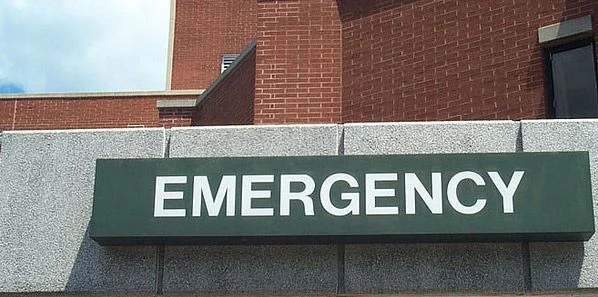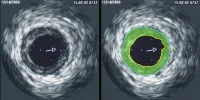Hospital admission rates for patients with heart failure (HF) presenting for emergency department (ED) care vary, and the implications of direct discharge home from the ED are unknown.
There is a substantial economic burden of HF admissions and a focus on readmissions as a quality of care measure. However, there is little appreciation of the pitfalls of using readmissions as a quality metric and the system factors that contribute to variations in hospitalisations. Since risk stratification is not routinely used in emergency care of acute HF, it is possible that greater numbers of patients discharged from the ED may result in more return hospital visits and admissions.
This retrospective cohort study examined whether patients treated in hospitals with low admission rates exhibit higher rates of repeat ED visits, hospital readmissions and death. The researchers hypothesised that patients cared for and discharged from EDs with lower hospital admission rates would exhibit higher rates of early repeat emergency visits and hospitalisations for recurrent HF.
Methods
In this study, EDs were divided into low-, medium- and high-admission-rate tertiles by their standardised HF admission rate in Ontario, Canada. To determine crude admission rates, the researchers calculated the proportion of patients with HF admitted relative to all patients who visited the ED for HF at each institution. Among adults (=18 years) with HF discharged from an ED between April 2004 and March 2010, the researchers evaluated the primary outcomes of repeat ED visits or hospitalisations for HF, and secondary outcomes, which included death, within 30 days stratified by HF admission-rate tertile.
For data gathering, multiple administrative databases were linked deterministically by using each patient's unique, encrypted health card number. For example, the National Ambulatory Care Reporting System (NACRS) database, which contains information on all ED visits, served to identify patients with HF seeking emergency care. The Ontario Health Insurance Plan (OHIP) claims database and the Canadian Institute for Health Information Discharge Abstract Database (CIHI-DAD) were used to identify diagnostic or interventional cardiac procedures performed within 30 days after emergency discharge, while the former was used to identify physician visits. Deaths were determined from the Registered Persons Database.
The distributions of continuous variables were compared across hospital admission categories using the Kruskal–Wallis test, and categorical variables were compared using the Mantel–Haenszel /2 test for trend. The age- and sex-standardised hospital HF admission rate was the primary exposure variable and was calculated as follows:
Age/sex - standard hospital HF admission rate = (Observed # of patients admitted/Expected # of patients admitted) x Crude admission rate
where the expected number of admitted patients was the sum of the product of the number of patients in each age/sex stratum in the hospital and the crude admission rate in each age/sex stratum in the overall cohort. Institutions were divided into low-, medium- and high-admission-rate tertiles based on the standardised hospital admission rate, with a similar number of patients per tertile as performed previously.
Age/sex-adjusted event rates were reported as rates per person-time and compared using Cox proportional hazards regression analysis. The effect of admission-rate tertile on time-to-event outcomes was evaluated using multiple Cox proportional hazards analyses, with adjustment for previously published HF-specific risk-adjustment models for prediction of death or morbidity.
The authors determined if patients discharged from medium- and low-admission-rate hospitals were less likely to receive care by any physician, family physician or cardiac specialist or received shared care (family physician+cardiac specialist) than high-admission-rate hospitals within 30 days using previously published methods. All analyses were performed with SAS V.9.2.
Results
After identification of unique ED visits, 89,878 patients remained, of whom 28,175 (31.3%) were discharged and 61,703 (68.7%) were admitted. The key findings include:
- 89,878 patients with HF presented to low- (n=29,929), medium- (n=30,900) or high- (n=29,049) admission-rate institutions, with hospitalisation rates of <67%, 67–75% and >75%, respectively;
- Among 28,175 ED-discharged patients, the multivariable-adjusted HR for repeat ED visit or hospitalisation for HF at low-admission-rate institutions was 1.18 (95% CI 1.07 to 1.29, p<0.001) compared with high-admission institutions. Similarly, the HR for repeat ED visits for HF was 1.28 (95% CI 1.14 to 1.44, p<0.001) at low-admission hospitals.
- Compared with discharged patients in the high-admission-rate tertile, adjusted HR for 30-day mortality was 1.19 (95% CI 0.95 to 1.47) at low-admission-rate hospitals;
- The HRs for all of the above outcomes were not significantly increased at medium-admission-rate hospitals.
Discussion and Conclusion
In the absence of acute risk stratification for HF, emergent decisions pertaining to hospitalisation are based primarily on the physician's perception of the clinical status of the patient. This study found that institutions varied in their threshold to admit patients with HF presenting to the ED irrespective of whether the visit was an initial or repeat presentation. Patients who were discharged from low-admission-rate institutions experienced the highest rates of early repeat ED visits or hospitalisations. Adverse events experienced by emergency-discharged patients may be contributed by defects in decision-making in the ED.
The use of systematic methods, such as validated risk scores, may reduce interinstitutional variations in HF admission rates and improve the quality of post-ED care.
Reference:
R Sacha Bhatia, Peter C Austin, Therese A Stukel, Michael J Schull, Alice Chong, Jack V Tu, Douglas S Lee. BMJ Qual Saf doi:10.1136/bmjqs-2014-002816 (http://qualitysafety.bmj.com/content/early/2014/07/15/bmjqs-2014-002816.long)
Image credit: Flickr.com
There is a substantial economic burden of HF admissions and a focus on readmissions as a quality of care measure. However, there is little appreciation of the pitfalls of using readmissions as a quality metric and the system factors that contribute to variations in hospitalisations. Since risk stratification is not routinely used in emergency care of acute HF, it is possible that greater numbers of patients discharged from the ED may result in more return hospital visits and admissions.
This retrospective cohort study examined whether patients treated in hospitals with low admission rates exhibit higher rates of repeat ED visits, hospital readmissions and death. The researchers hypothesised that patients cared for and discharged from EDs with lower hospital admission rates would exhibit higher rates of early repeat emergency visits and hospitalisations for recurrent HF.
Methods
In this study, EDs were divided into low-, medium- and high-admission-rate tertiles by their standardised HF admission rate in Ontario, Canada. To determine crude admission rates, the researchers calculated the proportion of patients with HF admitted relative to all patients who visited the ED for HF at each institution. Among adults (=18 years) with HF discharged from an ED between April 2004 and March 2010, the researchers evaluated the primary outcomes of repeat ED visits or hospitalisations for HF, and secondary outcomes, which included death, within 30 days stratified by HF admission-rate tertile.
For data gathering, multiple administrative databases were linked deterministically by using each patient's unique, encrypted health card number. For example, the National Ambulatory Care Reporting System (NACRS) database, which contains information on all ED visits, served to identify patients with HF seeking emergency care. The Ontario Health Insurance Plan (OHIP) claims database and the Canadian Institute for Health Information Discharge Abstract Database (CIHI-DAD) were used to identify diagnostic or interventional cardiac procedures performed within 30 days after emergency discharge, while the former was used to identify physician visits. Deaths were determined from the Registered Persons Database.
The distributions of continuous variables were compared across hospital admission categories using the Kruskal–Wallis test, and categorical variables were compared using the Mantel–Haenszel /2 test for trend. The age- and sex-standardised hospital HF admission rate was the primary exposure variable and was calculated as follows:
Age/sex - standard hospital HF admission rate = (Observed # of patients admitted/Expected # of patients admitted) x Crude admission rate
where the expected number of admitted patients was the sum of the product of the number of patients in each age/sex stratum in the hospital and the crude admission rate in each age/sex stratum in the overall cohort. Institutions were divided into low-, medium- and high-admission-rate tertiles based on the standardised hospital admission rate, with a similar number of patients per tertile as performed previously.
Age/sex-adjusted event rates were reported as rates per person-time and compared using Cox proportional hazards regression analysis. The effect of admission-rate tertile on time-to-event outcomes was evaluated using multiple Cox proportional hazards analyses, with adjustment for previously published HF-specific risk-adjustment models for prediction of death or morbidity.
The authors determined if patients discharged from medium- and low-admission-rate hospitals were less likely to receive care by any physician, family physician or cardiac specialist or received shared care (family physician+cardiac specialist) than high-admission-rate hospitals within 30 days using previously published methods. All analyses were performed with SAS V.9.2.
Results
After identification of unique ED visits, 89,878 patients remained, of whom 28,175 (31.3%) were discharged and 61,703 (68.7%) were admitted. The key findings include:
- 89,878 patients with HF presented to low- (n=29,929), medium- (n=30,900) or high- (n=29,049) admission-rate institutions, with hospitalisation rates of <67%, 67–75% and >75%, respectively;
- Among 28,175 ED-discharged patients, the multivariable-adjusted HR for repeat ED visit or hospitalisation for HF at low-admission-rate institutions was 1.18 (95% CI 1.07 to 1.29, p<0.001) compared with high-admission institutions. Similarly, the HR for repeat ED visits for HF was 1.28 (95% CI 1.14 to 1.44, p<0.001) at low-admission hospitals.
- Compared with discharged patients in the high-admission-rate tertile, adjusted HR for 30-day mortality was 1.19 (95% CI 0.95 to 1.47) at low-admission-rate hospitals;
- The HRs for all of the above outcomes were not significantly increased at medium-admission-rate hospitals.
Discussion and Conclusion
In the absence of acute risk stratification for HF, emergent decisions pertaining to hospitalisation are based primarily on the physician's perception of the clinical status of the patient. This study found that institutions varied in their threshold to admit patients with HF presenting to the ED irrespective of whether the visit was an initial or repeat presentation. Patients who were discharged from low-admission-rate institutions experienced the highest rates of early repeat ED visits or hospitalisations. Adverse events experienced by emergency-discharged patients may be contributed by defects in decision-making in the ED.
The use of systematic methods, such as validated risk scores, may reduce interinstitutional variations in HF admission rates and improve the quality of post-ED care.
Reference:
R Sacha Bhatia, Peter C Austin, Therese A Stukel, Michael J Schull, Alice Chong, Jack V Tu, Douglas S Lee. BMJ Qual Saf doi:10.1136/bmjqs-2014-002816 (http://qualitysafety.bmj.com/content/early/2014/07/15/bmjqs-2014-002816.long)
Image credit: Flickr.com
Latest Articles
Emergency, Cardiac, Quality, heart failure, patient care, admission
Hospital admission rates for patients with heart failure (HF) presenting for emergency department (ED) care vary, and the implications of direct discharge...










